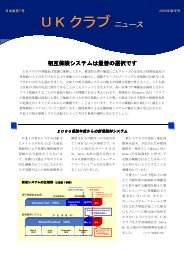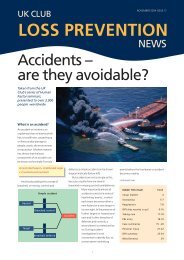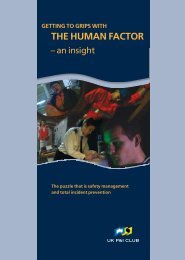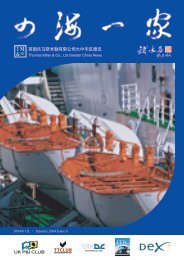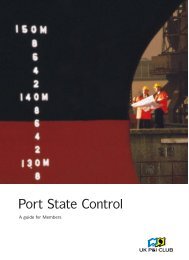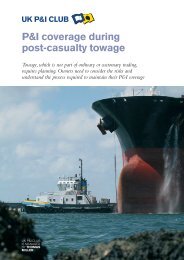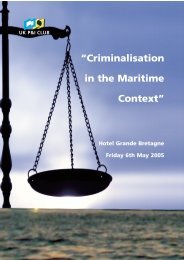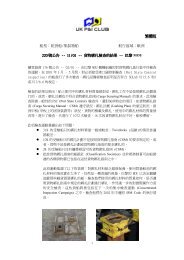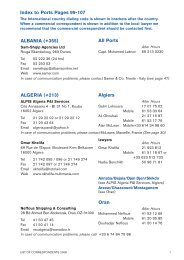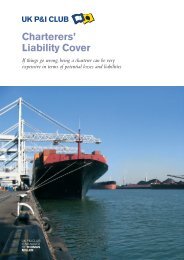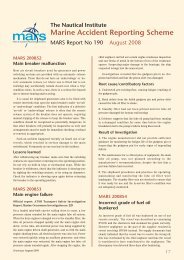Read full text
Read full text
Read full text
- No tags were found...
Create successful ePaper yourself
Turn your PDF publications into a flip-book with our unique Google optimized e-Paper software.
Shipping Corporation, Dodwell’s sub-agents in Korea. Senior shipowners spoke Japanese, which helped theP & I concept to spread quickly. There were also no such restrictions concerning foreign insurers as those underJapanese law.T.E. Wang, president of Hyopsung Shipping, looks back on a growth market: The rapid double-digit growth ofthe Korean economy and trade since the 1970s has encouraged Korean shipping companies to expand rapidly their .flag tonnage.The Korean fleet grew from some 800,000 grt in 1970 to 4 million grt in 1980. The annual average growth rate of17 per cent was accomplished by importing second-hand ships and by building new ships. Although the growth rate after1980 decreased because of the damage caused by the world shipping depression, the Korea fleet increased to approximately9 million tons including bare boat chartered ships at the end of 1994. Every Korean owner appreciates he can no longeroperate his fleet without the proper services rendered by P & I clubs.Meanwhile, Luke <strong>Read</strong>man was having to deal with Japanese restrictions: lt was apparent in the late 1970s thatthe club might at some stage need to have a licence from the Japanese government to insure Japanese flag ships whether forindemnity risks or protecting risks. An approach was made to the Ministry of Finance on a fairly informal basis, stating theclub’s position and asking to discuss an application for a licence as a foreign insurer in Japan. That discussion was held upby the Ministry of Finance for approximately 12 years. They said they would need to consider it and study it very care<strong>full</strong>y,and almost nothing happened. Eventually in the late 1980s two things came together. One was the great liberalizationof Japanese financial markets, including insurance and the possibility that a foreign insurer’s licence would now be moreeasily obtainable. The second thing was the growth and strength of the Japan P & I Club and its desire to become a directmember of the pool rather than relying on reinsurance, which had traditionally been given to it by the Britannia Club andthe UK Club. Those two threads came together and in the late 1980s the UK Club applied formally for a licence to do businessas a foreign insurer in Japan, that isto insure Japanese flag ships for protectionand indemnity risks in Japan. It was aninteresting and difficult task to completeall the necessary formalities for theMinistry of Finance because the foreigninsurers’ laws written in 1950 had notchanged. All the regulations issued underthat law were all naturally geared to commercialinsurance companies, and in thenumerous questionnaires and applicationdocuments that we had to fill out many ofthe questions were just not applicable to amutual club. We had to get ourselves in aposition where we could answer ‘Yes’ toall the relevant questions on the form, eventhough we believed that they were eithernot important questions or positively inapplicablequestions. That resulted in theclub having its only branch office anywherein the world, namely Tokyo, andthe appointment of Mr Hojo as the club’sJapanese representative. Finally, we wereThe UK Club Japan Branch opened in 1989. The Japanrepresentative, Mr M. Hojo, and his staff are the only employees ofthe UK Club anywhere in the world




